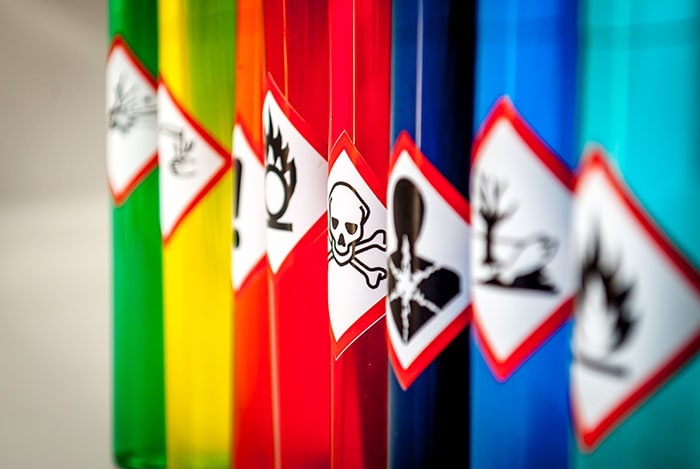Chemical Threats

Chemical Emergencies and Children
A chemical emergency occurs when a hazardous or poisonous chemical is released into the environment and has the potential to harm people’s health. Chemical releases can be unintentional, such as the release of toxic gas from a volcanic eruption or an industrial accident, or intentional, such as in a terrorist attack.
Hazardous chemicals have several different sources. Military organizations developed chemical weapons for war, such as nerve agents that prevent the nervous system from working or mustard agents that cause blisters in the eyes and on the skin. Some hazardous chemicals used in manufacturing industries, like benzene or chlorine, are found in household cleaners. These types of hazardous chemicals could harm people on purpose or could be released accidentally.
People are in potential danger when hazardous chemicals are released accidentally or used to harm people specifically. Children are at greater risk than adults during a chemical emergency.
Learn more about the types of hazardous chemicals.
Protecting Your Family During a Chemical Emergency
Each chemical emergency is different and may require different actions to keep families and children safe. During an emergency, you may have to evacuate or to shelter in place, depending on how close you are to the incident. In most cases, emergency authorities (local police, emergency coordinators, or government on the radio and on the television emergency broadcast system) will let you know where to go to protect yourself and your family.
When Should I Evacuate?
In some chemical emergencies, emergency authorities decide when it is safe to evacuate the immediate area and give instructions for going to an emergency shelter, if necessary. If you have children in a school in the exposed area, school authorities may evacuate your children to a safer place or emergency shelter. In these cases, do not go to your children during the emergency. This can put you and your children at greater risk. Wait until emergency or school authorities say it is safe for you to pick up your children.
Learn more about evacuating.
When Should I Stay Where I Am?
Some chemical emergencies make going outdoors or leaving the immediate area too dangerous. When this happens, emergency authorities will tell you to shelter in place (stay indoors where you are). If you have children at school, they may have to stay at the school. In these cases, do not go to your children during the emergency. This can put you and your children at greater risk. Wait until emergency or school authorities say it is safe for you to pick up your children.
If you and your children are in a vehicle during a chemical emergency, you should not try to shelter in the vehicle unless you have no other choice. Vehicles are not airtight enough to give adequate protection from chemicals.
Learn more about sheltering in place.
What if the Chemical Gets on My Children or Me?
Many chemicals can go through clothing and be absorbed through the skin. If exposed to hazardous chemicals, you will need to quickly decontaminate (reduce or remove the chemical so it is no longer dangerous to you). You can decontaminate by removing your clothing, disposing of it properly, and washing your body. If you and your child are exposed, decontaminate yourself first and then decontaminate your child. Wash your hands with soap and water after decontaminating another person to ensure that you do not contaminate yourself or anyone else.
If you don’t know what chemical spilled on you or your clothing, you can contact one of the following for more information about personal cleaning and disposal of contaminated clothing:
- State and local health departments
- Centers for Disease Control and Prevention
- Public Response Hotline (CDC)
- 800-CDC-INFO
- 888-232-6348 (TTY)
- E-mail inquiries: cdcinfo@cdc.gov
- Public Response Hotline (CDC)
Learn more about decontamination.
Additional Resources
Chemical Agents: Facts About Personal Cleaning and Disposal of Contaminated Clothing
Fact-sheets on specific chemical agents
Chemical Terrorism and Agents from the American Academy of Pediatrics